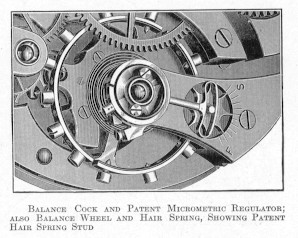Forgotten Lore
Today, the past fades away. The University of Houston's College of Engineering presents this series about the machines that make our civilization run, and the people whose ingenuity created them.
I've been thinking over the opening lines of Edgar Allan Poe's poem, The Raven:
Once upon a midnight dreary, while I pondered, weak and weary,
Over many a quaint and curious volume of forgotten lore. ...
It's that idea of forgotten lore. We've all mourned the day Christian extremists destroyed the famous Alexandria Library in AD 391. Yet that Library was some six centuries old by then. Accidents and vandalism had long since chipped away at it. The lore of the past -- oral, written, archaeological -- always diffuses with time. The historian's task is to reconstruct the past from increasingly skimpy information.
And that's not entirely bad. For the past can chain us down. The great mathematician Albert North Whitehead once said,
A science that hesitates to forget its founders is lost.
That surprising remark makes some sense when we consider how science requires us constantly to sever the ties of old ideas.
Yet Whitehead's advice, followed precisely, can only lead to reinventing old wheels over and over. Last week a colleague who'd been pondering the quaint and curious volumes of forgotten lore in our library came up with a 1938 edition of Kermode's book on the Mechanics of Flight. This old book still used canvas and wood bi-planes to display the forces acting on airplanes. So I asked myself what we'd gain and what we'd lose if this book were forgotten.
Kermode's illustrations shape a powerful intuitive lore of the precarious balance of forces that make flight. Today, that understanding is fading fast: the difference between angle of incidence and angle of attack; why low-winged airplanes are more stable in a sideslip than high-winged pontoon planes; subtle differences among airfoils. Kermode explains it all and punctuates it with poetry -- sweet and awkward attempts to articulate the beauty of flight:
And the air is crisp, and the wind is keen,
And the clouds are lit with a silvery sheen, Ö
Much of Kermode's lore has to die and be replaced. But when it does, we lose more than the lore. We lose his crystalline understanding of flight. He explains lift, drag, thrust, gravity, propellers and ailerons with graphs, pictures, and very little math. Today we write the math into computers and the physics no longer resides in our bodies. Of course we can forget the lore. But we're in trouble when we forget the viewpoint that created the lore.
That corporeal understanding drove Kermode to poetry, and it drove the pioneers of flight to invention. We no longer need to know a rigger from a fitter. But we're in trouble when we no longer have a clear physical sense of the airplane in flight.
We've reached the point of forgetting lore so rapidly that we also lose what once surrounded it. And not just with airplanes! We let too much of technology slip into abstraction. We forget the physical poetry that necessarily goes with all we make.
I'm John Lienhard, at the University of Houston, where we're interested in the way inventive minds work.
(Theme music)
To see the Whitehead quote in another context, see Kuhn, T. S., The Structure of Scientific Revolutions. Chicago: University of Chicago Press, 1962, 1970, pp. 138-139.
Kermode, A.C., An Introduction to Aeronautical Engineering. London: Sir Isaac Pitman & Sons, LTD, 1938. (1st ed. 1932. 10th ed. 1996.)
The colleague in the UH Mechanical Engineering Department who found Kermode's book, and who voiced many of the concerns I've expressed here, was N. Shamsundar.
A listener wrote to point out that I was unclear in dismissing the claim that Christian extremists were responsible to the demise of the Alexandria Library. That appears to be wholly made up. Some debate as to just what caused the final death of the library, and when it occurred, lingers. Wikipedia argues that it was most likely destroyed by the Romans in the third century AD. See: https://en.wikipedia.org/wiki/Library_of_Alexandria. Today's scholarly consensus is that the library’s loss was gradual—through war, religious conflict, and neglect. Another often-repeated story -- that it was finally destroyed at demand of a Caliph -- also appears to be untrue.

An example of forgotten lore: This image from The Wonder Book of Knowledge, from 1923,
explains to young people, the intricacies of adjusting a fine watch.